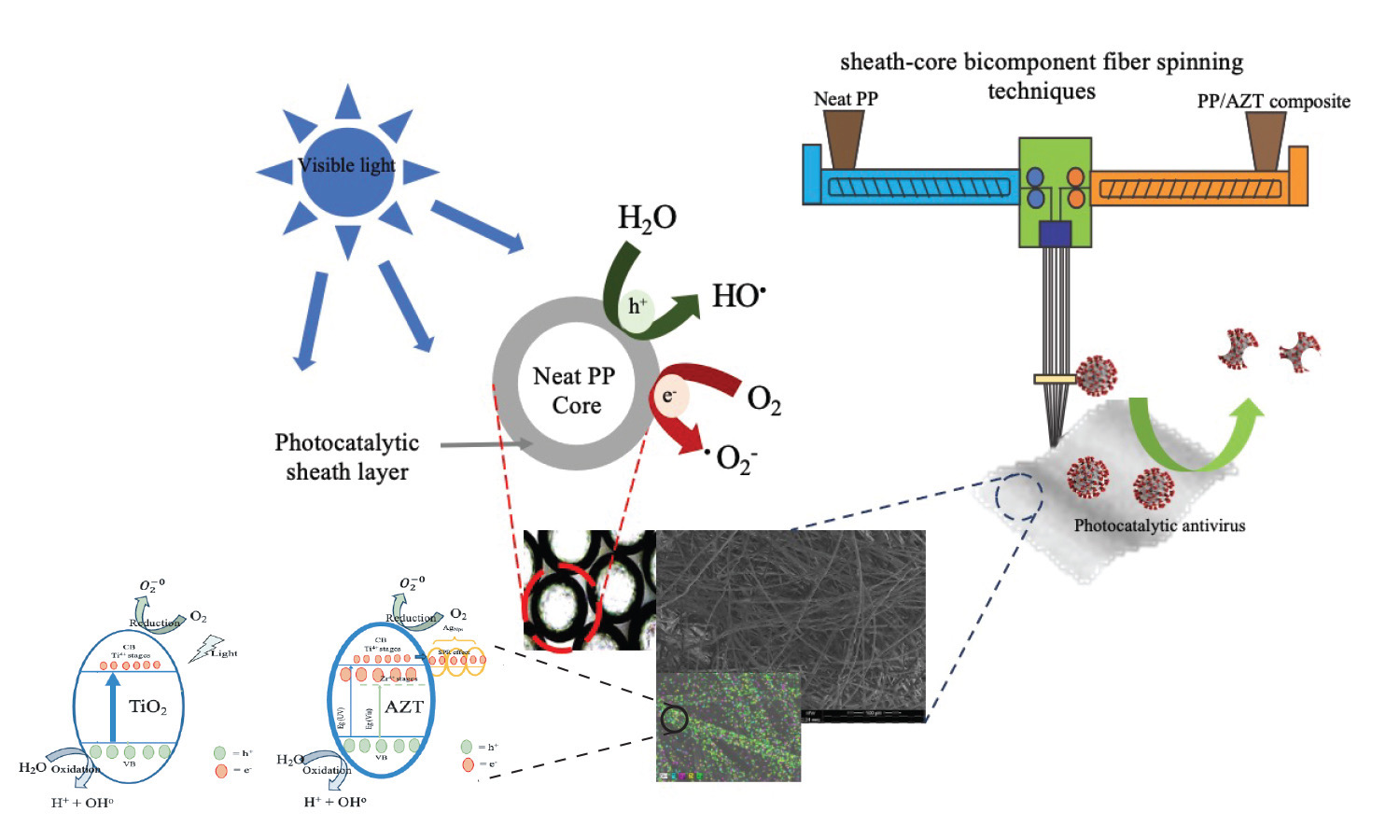A novel photocatalytic sheath/core bicomponent fibre for severe acute respiratory syndrome coronavirus inactivation
Widtawad Reantong, Siriluk Chiarakorn , Pornsawan Leangwutwong
, Pornsawan Leangwutwong , Akanitt Jittmittraphap
, Akanitt Jittmittraphap , Nanjaporn Roungpaisan
, Nanjaporn Roungpaisan , Natee Srisawat
, Natee Srisawat
 , Pornsawan Leangwutwong
, Pornsawan Leangwutwong , Akanitt Jittmittraphap
, Akanitt Jittmittraphap , Nanjaporn Roungpaisan
, Nanjaporn Roungpaisan , Natee Srisawat
, Natee SrisawatVol. 19., No.2., Pages 176-191, 2025
DOI: 10.3144/expresspolymlett.2025.13
DOI: 10.3144/expresspolymlett.2025.13
GRAPHICAL ABSTRACT

ABSTRACT
The coronavirus disease of 2019 (COVID-19) has become a global pandemic, leading to severe health issues such as pneumonia, organ failure, and death. Face masks made of non-woven textiles have been widely used to protect against SARS-CoV-2, but concerns arose regarding the potential infection from contaminated masks. To address this, titanium dioxide, a photocatalyst, shows promise in antimicrobial applications, including virus inhibition. This study explores the development of a sheath-core bicomponent fibre with a polypropylene core and a sheath containing an Ag and Zr co-doped TiO2 photocatalyst (AZT). Zr-Ag-TiO2 The fibres were produced using a double-extrusion spinning system, and the effects of the sheath-core ratio (50:50 and 80:20 w/w) and AZT content (1–3 wt%) on mechanical and antiviral properties were analysed. The fibres demonstrated improved mechanical strength and thermal stability, with the highest anti-SARS-CoV-2 activity (99.91%) observed in fibres with 2 wt% AZT at a 50:50 ratio after 30 min of fluorescent irradiation.



